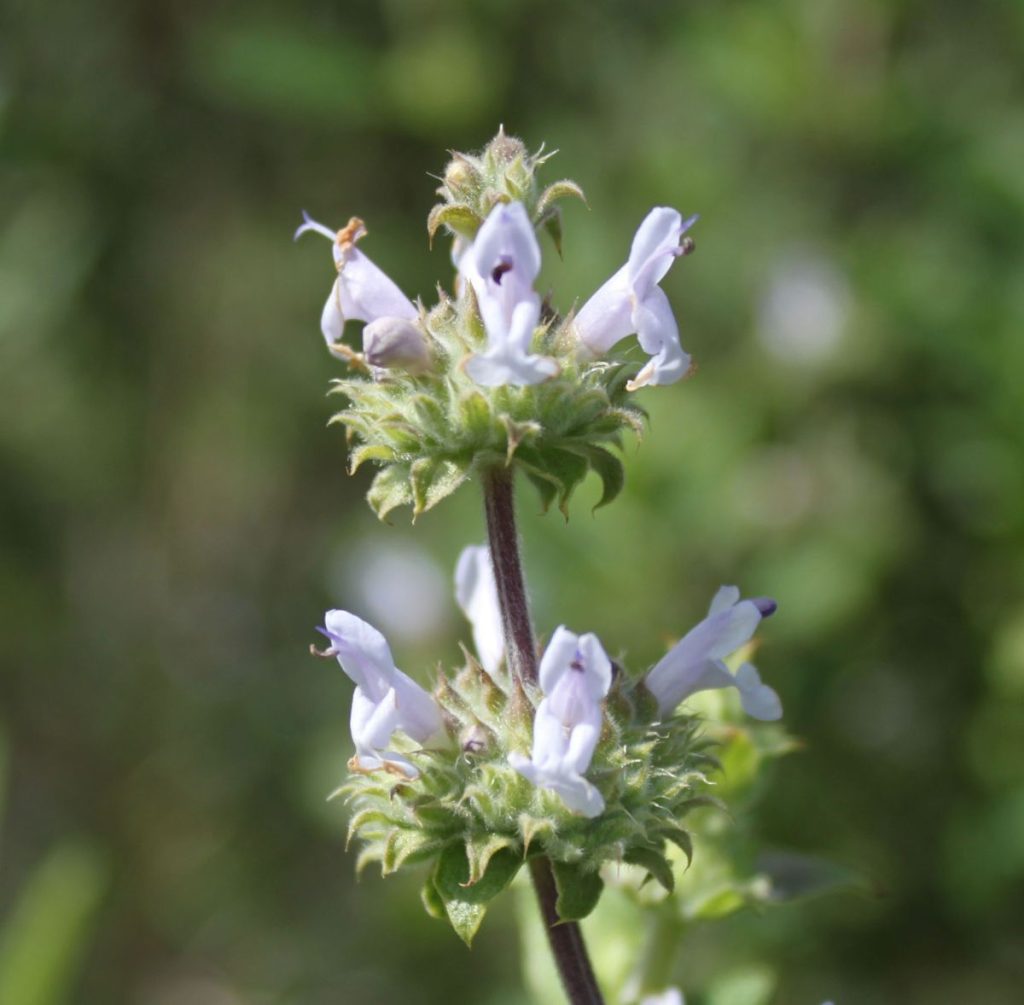
The Lamiaceae, commonly known as the mint family, is a family of flowering plants that includes many well-known herbs and aromatic plants. Here are some characteristics of the Lamiaceae:
- Square Stems: When you roll the stem between your fingers, you can feel the four distinct edges.
- Opposite Leaves: Leaves are typically arranged in pairs on the stem, with each pair of leaves located opposite each other.
- Aromatic Oils: Aromatic oils give them their characteristic scents and flavors. Examples: mint, basil, oregano, and rosemary.
- Tubular Flowers: The flowers often have bilateral symmetry, meaning they can be divided into two equal halves along one plane.
- Inflorescence: Flowers are arranged in spikes, whorls, or clusters, forming an inflorescence. This arrangement is often seen in the form of a spike or a head at the top of the stem.
- Fruit: Composed of four small nutlets or seeds, often enclosed by the persistent calyx (the sepals).
- Glandular Trichomes: Plants have hairs with glands that secrete aromatic oils and can be seen as small dots or bumps on the leaves and stems.
- Culinary and Medicinal Uses: Often used for culinary purposes, such as herbs and spices, and for their medicinal properties. Valued for their aromatic and flavorful qualities as well as their potential health benefits.
- Diverse Genera: The family is quite diverse and includes a wide range of genera. Some well-known genera within this family include Mentha (mint), Salvia (sage), Thymus (thyme), Rosmarinus (rosemary), and Ocimum (basil), among others.
- Worldwide Distribution: Lamiaceae plants can be found in various parts of the world, with many species adapted to different climates and regions.

Jepson video showing characteristics of the Lamiaceae.
CNPS video showing a presentation on the genus Salvia.